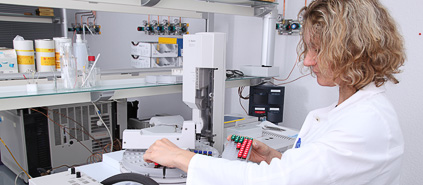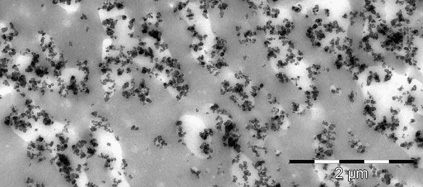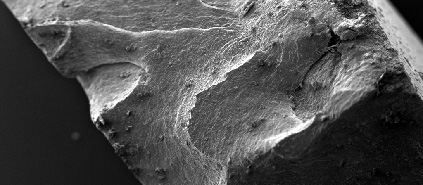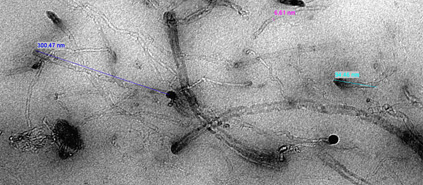Department Elastomer Chemistry (EC)
In terms of content, Elastomer Chemistry (EC) covers the areas: chemical material characterization and microscopy. Because of the issues involved, microscopy collaborates closely with the other departments at DIK. Equipped with cutting-edge technology for spectroscopy, chromatography, thermoanalysis, and electron microscopy, the department is able to guarantee thorough execution of the numerous commissioned assignments and research projects entrusted to it on the most diverse issues on elastomers, polymers, raw materials and uncured compounds. The unit‘s more than 20 highly qualified and experienced technicians and researchers provide work of the highest level.
Topically, the overall range of research focal points is quite diverse. It includes the development of new materials, studies of aging mechanisms, crosslinking, methods development, characterization of multiphase systems (morphology) and of rubber/filler interaction, elastomer emissions and environmental exposure, processes for transporting gases and fluids in elastomers, and recycling.
Head of department

Dr. Astrid Diekmann


Main research topics
- Characterization of multiphase systems (morphology)
- Polymeric fillers
- Rubber/ filler interaction
- Crosslinking
- Aging mechanisms
- Modification of fillers and polymers
- Nanomaterials (synthetic and bio-based)
- Leachables and extractables out of polymer materials
- Elastomer emissions and environmental exposure
- Transport processes in polymers for gases and fluids in elastomers
Call for projects
An overview of current calls for projects can be found here.

Rubber/ filler interaction
- Filler-polymer-interaction in dependency on material and processing
- Improvement of filler-polymer-interaction by means of chemical functionalization
- Mechanistic investigations on chemical bonding of filler onto polymer

Aging mechanisms
- Structure-aging stability relationships of polymers
- Efficiency of antioxidants
- Kinetics of aging processes – data for simulations
- Method development for aging investigations
- Aging of elastomers in contact with media

Nanomaterials (synthetic or renewable)
- Elastomers with high electric conductivity using carbon based nano materials
- Elastomers with barriere properties using layered silicates
- Dispersion of high active nano materials in polymers by means of melt – or latex-mixing techniques
- Optimization of filler- polymer interaction

Emissions and exposure of elastomers
- Systematic investigations of vulcanization fumes with correlation to used raw materials
- Emissions from products
- Migration of rubber components into water
- Purity of raw materials (REACH)
